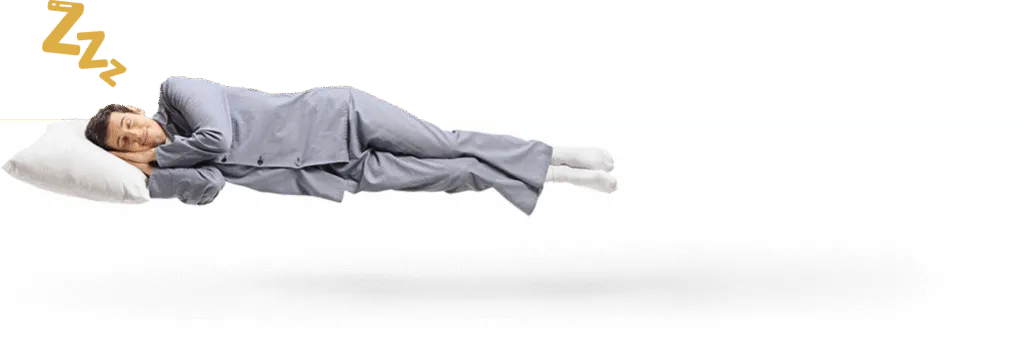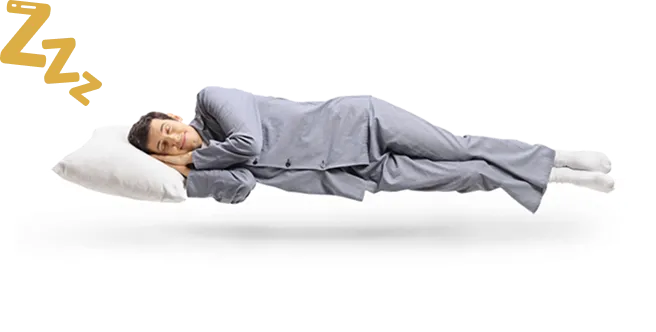Comparable choice to Somnus Regent -Kingsize
So far in our search for a new bed the favourite we've found in our price range in the Somnus Regent Kingsize. Having read around on here and other sites I know that Somnus is a decent brand but I'm a little concerned about their different attitude to spring numbers which makes it hard to identify comparable products. For reference the Regent is a 4,500 Spring mattress with a 550 Spring base.
I'm 14 stone and my wife is 10 stone and we both like a fairly firm feel to a mattress. I tend to move around quite a bit when trying to get to sleep (probably in part due to our very old, very bad mattress) and my wife particularly liked that she couldn't feel my 'fidgeting' when we tried it out.
I was wondering if you have information about the Somnus 'iP Intelligent' pocket springs. With that many springs are they liable to get damaged, does it really benefit the quality of the mattress, how does it impact on the quality of the upholstery? I was also hoping you might recommend one or two other options, including your own, that would be a comparable price?
We were quoted £1,495 for the divan set with another £495 for the full depth Bedford headboard. £2,000 really is out top budget and I'd be happier landing closer to the £1,500 mark for the complete package. This didn't include a topper, which wasn't mentioned by the same man as a requirement for the mattress.
As a final question, my wife quite likes some wooden bed frames she's seen in Next and other home stores. Assuming we spent £500 on a bed frame, would we be able to achieve a comparable comfort/quality level with a £1,000-1,500 mattress which is designed for use with a frame rather than a divan?
As you can probably tell, where lost in all the possibilities - yesterday I had no idea how hard buying a new bed could be! Your website has been extremely helpful, I hope that you can help find a bit of direction in our search.
Hi David,
Thanks for asking your question, it's certainly a detailed and interesting one to answer!
Ok, so the age old question of how many springs is acceptable, warranted, necessary in a mattress? Is more better? I'm going to go out and say it, probably breaking the brotherhood of the mattress secret society. One you go above 1500-1800 pocket springs in a mattress there really is no discernable difference for most. It's marketing, a way to sell something different but when its 4000+ springs its starts to get unnecessary in our opinion because those springs simply take the place that could contain fantastic natural fibres giving better support and comfort. Phew, that's better. I've waited for ages to finally get that out there in a comment.
So why do you need 1000's of mini micro-springs? Well, you don't.
All that happens is you end up with layer after layer of spring reducing the available space left for upholstery which really is where the magic happens for most sleepers. Sure two layers of springs can give more bounce, but after that, the upholstery is where you want to focus you gaze and hard earned cash. Whether you ask upholstery specialists, spring manufacturers (behind closed doors obviously) or even engineers, they will all state their preference for keeping spring counts around the 1500-1800 count in a king size in their opinion. It's tried and tested, robust, consistent and durable.
It's not that there is anything wrong with the mattress you are looking at or any mattress with say 3000-5000 springs. We just can't see why you would want to have springs over upholstery? Unless these mattresses are let's say 40cm deep to accommodate the extra springs, which would be incredibly deep and heigh to get on top of, then logic dictates the springs must take the place of what would be upholstery.
Please see below for our own guidelines on body weights and spring tensions as this is tied into it;
| Bodyweight | Spring tension |
|---|---|
| Upto 16 Stone / 50-101kg | Medium (1.4mm) |
| 16 Stone / 101kg Upwards | Firm (1.6mm) |
| Available in Bespoke Products (Please Call) | Soft (1.2mm) |
You also need to think about just how much metal your bed contains vs natural fibres. The fibres and upholstery layers are where the real skill in designing a mattress comes in. You want progressively softer layers of ideally, natural highly wicking materials that all you to sink but be supported. horsehair for example in a mattress can act like another row of tiny springs but without all that metal and is far more breathable than spun bond coverings. This would be a more discerning design layer than more springs.
How can a mattress of a set size, say kingsize, contain 4000 springs vs your 1600 you may say. Well firstly these are thinner smaller springs in rows stacked up on top of each other vs a more robust single layer of say quality calico springs. You then need to insulate each layer which is turn firms up the potential movement and flex of these springs, which in our experience removes the benefit of the pocket spring if too much insulation is used. I also wonder about the longevity of these mini springs and how they will be affected over time.
The end answer is the same, I would recommend placing the weight your consideration on the upholstery layers rather than 1000's of springs crammed in here and there.
Based on your budget have a look at our Artisan Bespoke, a firmer feel in the top layers which features 100% natural fibres and a calico vanadium coated pocket spring support unit. It contains 1600 pocket springs, the magic number! That should give you a good model to compare to. I'd recommend this in a medium spring tension for your weights, and the firmer upholstery layers will give you the firm feel you require but with a spring unit that will react appropriately for your weights, a firm spring tension would be punishing for you.

Wooden bed frames are a tricky one. I'm in the middle of writing an article about them and the considerations needed with bases. The one thing to consider is consistency with a base which is why divans and sprung edge divans are so popular. They are made perfectly to keep any mattress supported, level and reduce stress or fatigue on them. Wooden frames and bedsteads are usually more stylistically designed, which is fine but you may need to modify it to make it truly suitable for such a fantastic mattress as the Artisan Bespoke. Usually, they are slatted and the gaps between the slats mean the base is not consistent. We always recommend you board over the slats to prevent sagging lumps and bumps occurring over time as the mattress is forced between these slats with the sleepers weight.
We recommend using plywood, MDF or peg board for this and there is a detailed article here on it. Also, you need to consider that a wooden solid frame will firm up a traditional mattress because most handcrafted traditional mattresses like vi spring are designed with a sprung edge base in mind. Lastly wooden and metal frames are notorious for squeaking as they get older, this is because wood warps and shrinks and the bearings on both of these bases loosen over time. So just consider that you may need to tighten these kinds of bases periodically to avoid being woken up to squeaks and creaks! Our sprung edge pocket spring divan bases in a kingsize contain 1000 springs.
I have given you an awful lot to think about David so it maybe best you call us on 0161 437 4419 to discuss further or clarify any points that you may need more help with. I hope that this has at least given you a new angle to look at mattresses from and hopefully cut out some of the confusion around spring counts!
Kind Regards, Lee.

Dreaming of the perfect nights sleep?

Newsletter
Enter your email to join our newsletter. We’ll send you occasional news and mattress expertise.
